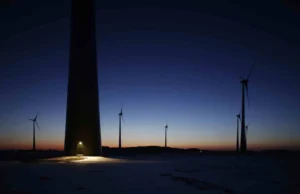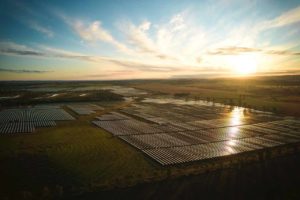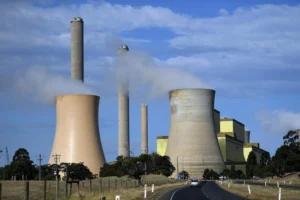
Solar, wind, and battery prices are dropping so fast that, in Colorado, building new renewable power plus battery storage is now cheaper than running old coal plants. This increasingly renders existing coal plants obsolete.
Two weeks ago, Xcel Energy quietly reported dozens of shockingly low bids it had received for building new solar and wind farms, many with battery storage (see table below).
The median bid price in 2017 for wind plus battery storage was $21 per megawatt-hour, which is 2.1 cents per kilowatt-hour. As Carbon Tracker noted, this “appears to be lower than the operating cost of all coal plants currently in Colorado.”
The median bid price for solar plus battery storage was $36/MWh (3.6 cents/kwh), which may be lower than about three-fourths of operating coal capacity. For context, the average U.S. residential price for electricity is 12 cents/kWh.

Note that by definition, half of the bids are below the median price — and there were 87 bids for solar plus storage, meaning many bids were quite low (see table above).
There were 96 bids for wind power alone — at a median price of 1.8 cents/kwh — which means some were very low-priced indeed. The tremendous number of bids in Colorado reveal the power of competition in driving prices down.
But it’s not just Colorado whose energy markets have been turned upside down. In November, we reported on the remarkable findings of the financial firm Lazard Ltd., which found that in many regions of North America, “the full-lifecycle costs of building and operating renewables-based projects have dropped below the operating costs alone of conventional generation technologies such as coal or nuclear.”
What XCel Energy has shown us is that the price for battery storage is dropping so fast, adding it to a solar or wind project increases the total price only modestly. And that’s a game-changer.
Remember, the knock against solar and wind power has been that they are variable, so their power supposedly isn’t as useful as “baseload” (24-7) power like coal and nuclear. Indeed, that was part of the argument that Energy Secretary Rick Perry had made in his now-failed effort to get the Federal Energy Regulatory Commission (FERC) to force U.S. consumers to bail out the coal and nuclear industries.
But even limited battery storage gives renewables enough flexibility to handle a lot of variability. Moreover, as the table above shows, seven bids combined wind and solar with batteries with a median cost of only about 3 cents/kWh.
Since it tends to be windier at night, when the solar panels aren’t generating power, this is yet another way to level out the power delivered from renewable projects. And as Perry’s own grid study showed last year, many other strategies either exist or are emerging that overcome the variability issue, including electric cars.
Moreover, Bloomberg New Energy Finance projects battery prices are projected to drop another 75 percent by 2030, even as solar and wind prices also keep dropping sharply. As a result, the price for dependable power from renewable energy sources is just going to keep going lower and lower.
Source: ThinkProgress. Reproduced with permission.










